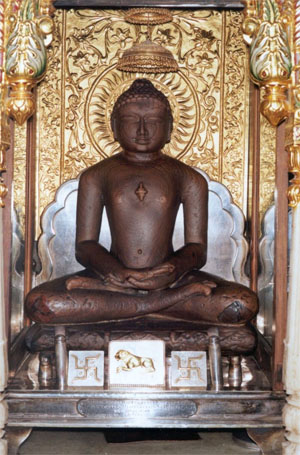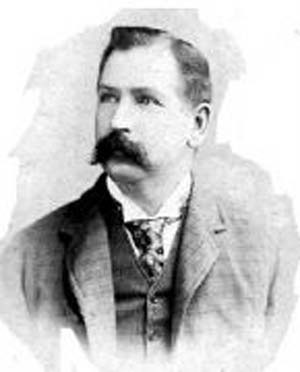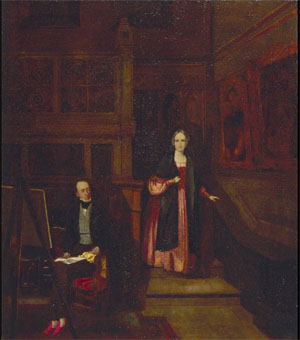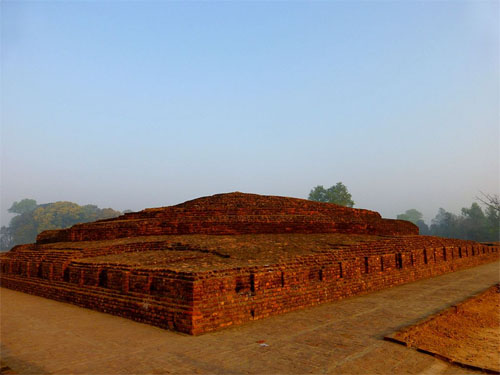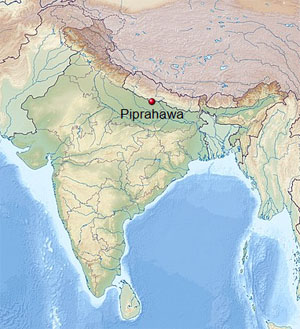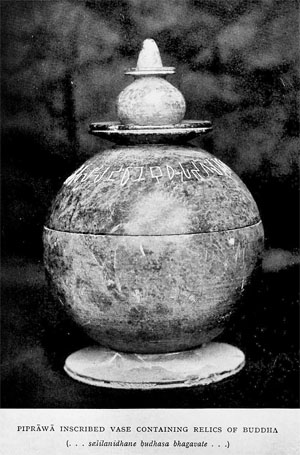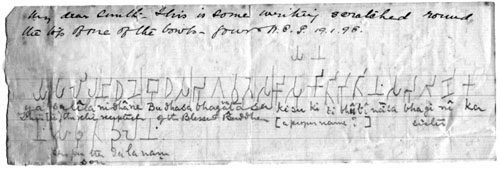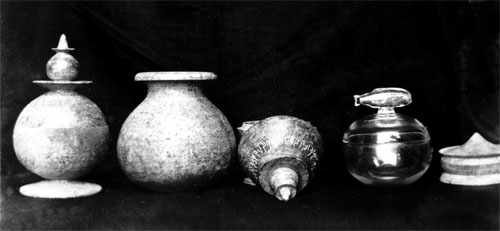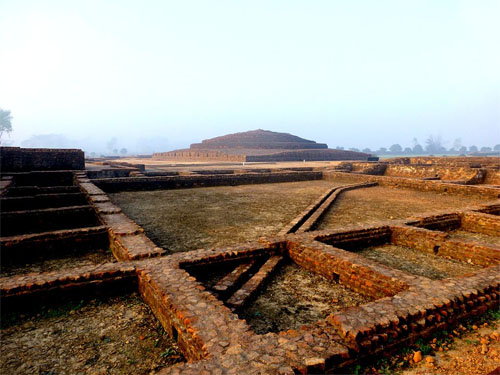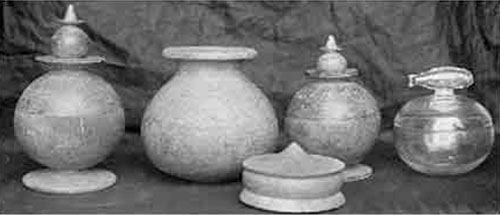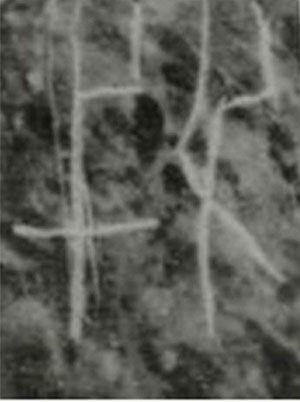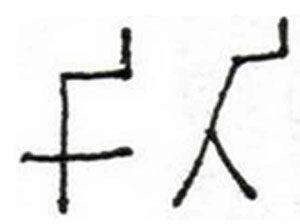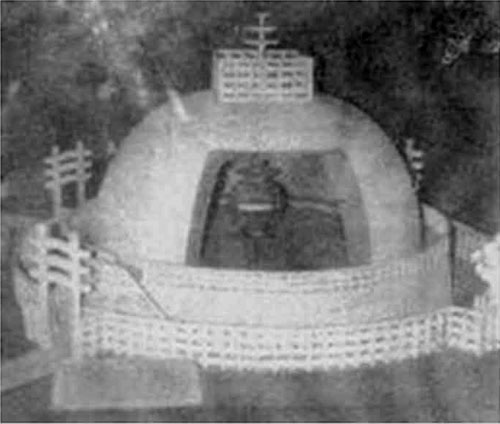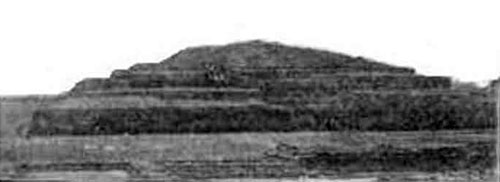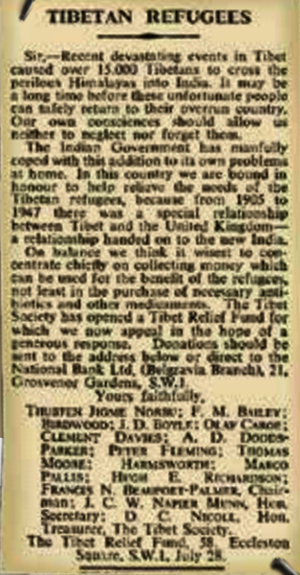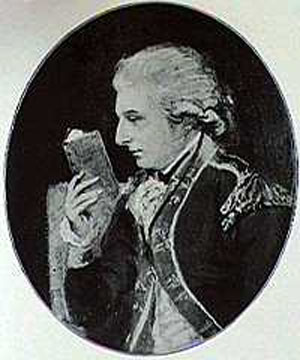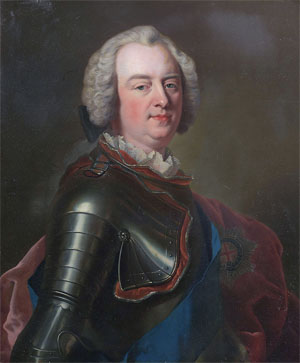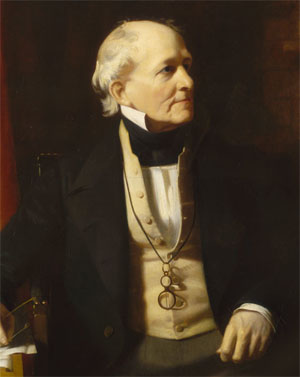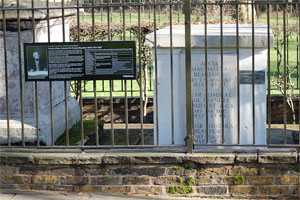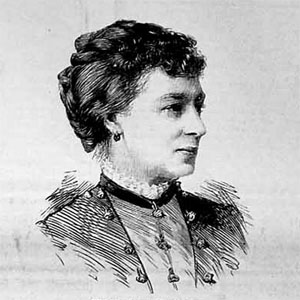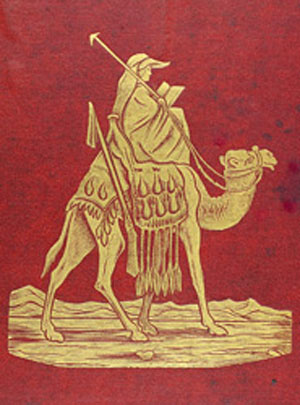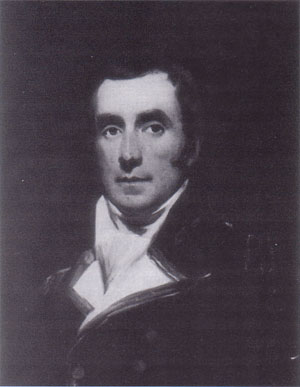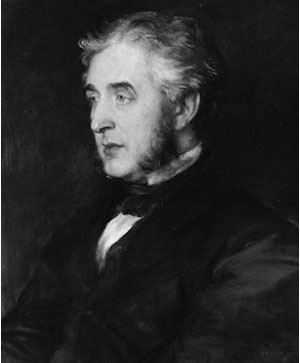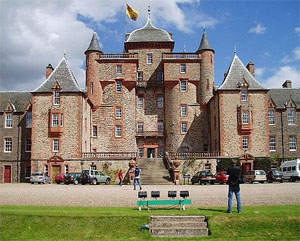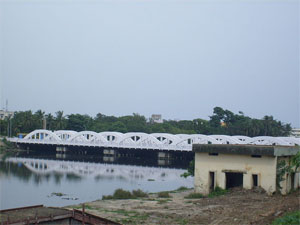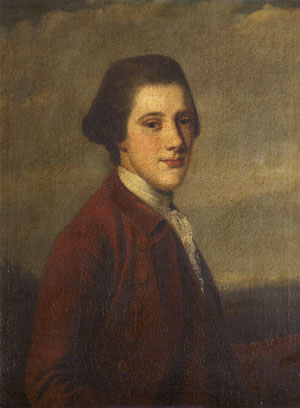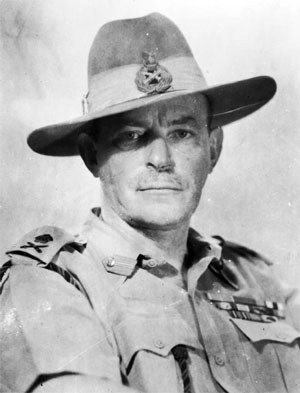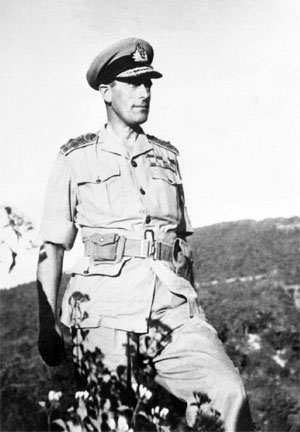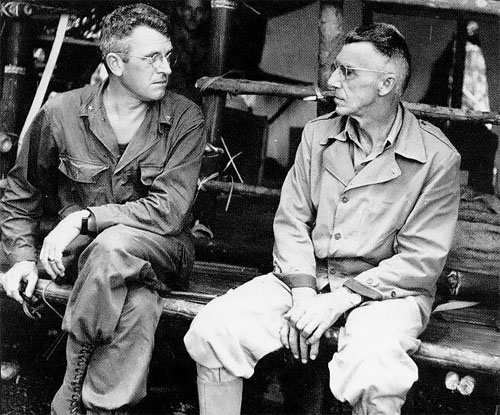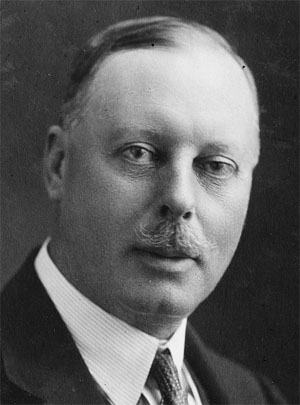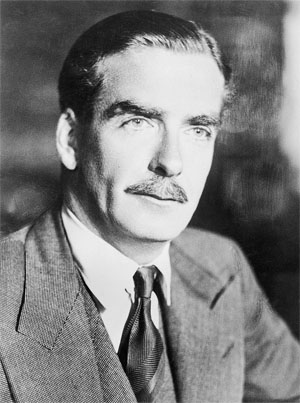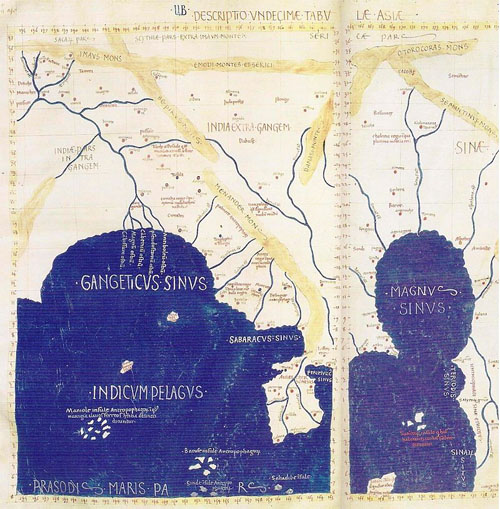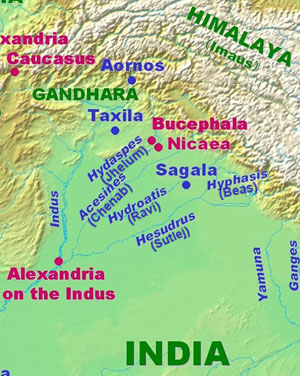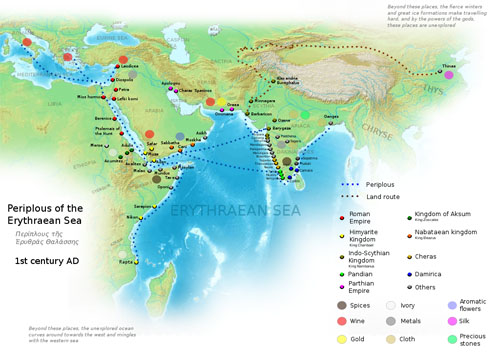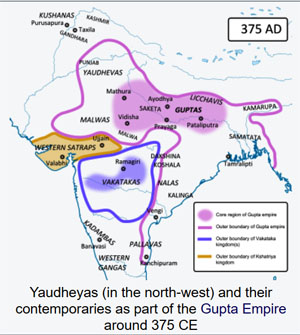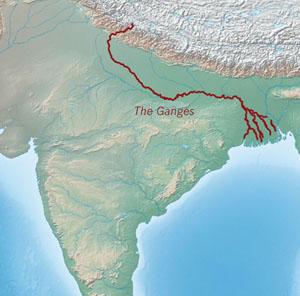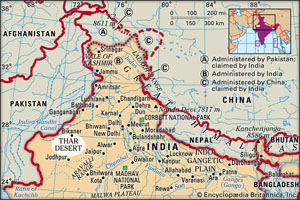The Chronology of Ancient India, Victim of Concoctions and Distortions
by Vedveer Arya
sanskritmagazine.com
2018
NOTICE: THIS WORK MAY BE PROTECTED BY COPYRIGHT
YOU ARE REQUIRED TO READ THE COPYRIGHT NOTICE AT THIS LINK BEFORE YOU READ THE FOLLOWING WORK, THAT IS AVAILABLE SOLELY FOR PRIVATE STUDY, SCHOLARSHIP OR RESEARCH PURSUANT TO 17 U.S.C. SECTION 107 AND 108. IN THE EVENT THAT THE LIBRARY DETERMINES THAT UNLAWFUL COPYING OF THIS WORK HAS OCCURRED, THE LIBRARY HAS THE RIGHT TO BLOCK THE I.P. ADDRESS AT WHICH THE UNLAWFUL COPYING APPEARED TO HAVE OCCURRED. THANK YOU FOR RESPECTING THE RIGHTS OF COPYRIGHT OWNERS.
[N]either the Vedas, the Upanishads, nor the Purans, profess to be historical compositions; and the ascribing this character to the latter, in particular, is a most erroneous opinion, for, with the exception of the genealogies of the princes of the solar and lunar races, the Purans contain nothing which has the slightest semblance of history ... It is true that each Puran contains a description of the division of time according to the Hindu system; but the chronology of no event is fixed more precisely than by referring it generally to such a Kalpa, or Manvantara, or Yug, as the particular year is never mentioned. The attempting, therefore, to extract either chronology or history from such data, must be an operation attended with equal success as the extraction of sunbeams from cucumbers by the sages of Laputa" -- Vans Kennedy 1831: 130.
-- Frederick Eden Pargiter: Excerpt from The Puranas, by Ludo Rocher
The Greek writers relate that the father of Sandrocottus was a man of low origin, being the son of a barber, whom the queen had married after putting her husband the king to death. He is called by Diodorus Siculus (16.93, 94) Xandrames, and by Q. Curtius (9.2) Aggrammes, the latter name being probably only a corruption of the former. This king sent his son Sandrocottus to Alexander the Great, who was then at the Hyphasis, and he is reported to have said that Alexander might easily have conquered the eastern parts of India, since the king was hated on account of his wickedness and the meanness of his birth. Justin likewise relates, that Sandrocottus saw Alexander, and that having offended him, he was ordered to be put to death, and escaped only by flight. Justin says nothing about his being the king's son, but simply relates that he was of obscure origin, and that after he escaped from Alexander he became the leader of a band of robbers, and finally obtained the supreme power...The name of Sandrocottus is written both by Plutarch and Appian Androcottus without the sibilant, and Athenaeus gives us the form Sandrocuptus (Σανδρόκυπτθς), which bears a much greater resemblance to the Hindu name than the common orthography. (Plut. Alex. 62 ; Justin, 15.4 ; Appian, Syr. 55 ; Strab. xv. pp. 702, 709, 724 ; Athen. 1.18e.; Arrian, Arr. Anab. 5.6.2; Plin. H. N. 6.17.)
-- Sandrocottus, by William Smith, A Dictionary of Greek and Roman biography and mythology
Highlights:
Sir William Jones (1746-1794) deliberately identified 'Sandrocottus" mentioned by the Greeks as #ChandraguptaMaurya and declared that he was the contemporary of Alexander in 327-326 BCE...
Puranas tell us that Chandragupta Maurya ascended the throne by defeating the last Nanda king around 1500 BCE....
Therefore, #Samudragupta was the contemporary of Alexander in 327-326 BCE not Chandragupta Maurya...
The Greek scholars recorded the names of kings of India as Xandrames, and Sandrocottus. Western historians deliberately identified these names with those of Mahapadmananda or Dhanananda and Chandragupta Maurya. Xandrames was said to be the father of Sandrocottus. According to John W. McCrindle, Diodorus distorted the name "Sandrocottus" into Xandrames and this again is distorted by Curtius into Agrammes...
Seleucus Nikator also sent Deimachos on an embassy to Allitrocades or Amitrocades, the son of Sandrocottus. Western historians identified Allitrocades or Amitrocades to be Bindusara, the son of Chandragupta and concocted that Bindusara was also known as "Amitraghata". None of the Indian sources ever referred Bindusara as Amitraghata. Western historians deliberately created the word "Amitraghata" with some sort of resemblance...
Megasthenes described the system of city administration of Pataliputra but there is no similarity between the system described by Megasthenes and the system of city administration given in Kautilya Arthasastra. Megasthenes also stated that there was no slavery in India but Kautilya Arthasastra's Chapter 65 named "Dasakalpa" is solely devoted to the status of slaves among the Aryans and the Mlecchas. Probably, the slavery system that existed during Mauryan era has gradually declined by Gupta era. Thus, Megasthenes cannot be contemporary to Chandragupta Maurya.
Megasthenes not only often visited Palibothra but also stayed in the court of Sandrocottus for a few years. But he did not even mention about Kautilya or Chanakya who was the real kingmaker and also the patron of Chandragupta. No Greek scholar ever mentioned about Kautilya. Therefore, Megasthenes cannot be the contemporary to Chandragupta Maurya.
Greek scholars often mentioned that Sandrocottus was the king of the country called as Prasii (Prachi or Prachya). Pracha or Prachi means eastern country. During the Nanda and Mauryan era, Magadha kings were ruling almost entire India. Mauryan Empire was never referred in Indian sources as only Prachya desa or eastern country. Prachya desa was generally referred to Gupta Empire because Northern Saka Ksatrapas and Western Saka Ksatrapas were well established in North and West India. Megasthenes mentioned that Sandrocottus is the greatest king of the Indians and Poros is still greater than Sandrocottus which means a kingdom in the North-western region is still independent and enjoying at least equal status with the kingdom of Sandrocottus...
The Greek historian Plutarch mentioned that Androkottus (Sandrocottus) marched over the whole of India with an army of 600 thousand men. Chandragupta Maurya defeated Nandas under the leadership of Chanakya. There was no need for him to go on such expedition to conquer the whole of India because he has already inherited the Magadha kingdom of Nandas covering entire India. Actually, it was Samudragupta who overran the whole of India as details given in Allahabad pillar inscription.
According to Greek historians like Justinus, Appianus etc., Seleukos made friendship with Sandrocottus and entered into relations of marriage with him. Allahabad pillar inscription tells us that Samudragupta was offered their daughters in marriage (Kanyopayanadana ... ) by the kings in the North-west region. There is nothing in Indian sources to prove this fact with reference to Chandragupta Maurya...
The Jain work "Harivamsa" written by Jinasena gives the names of dynasties and kings and the duration of their rule after the nirvana of Mahavira. Jinasena mentions nothing about Mauryas but he tells us that Gupta kings ruled for 231 years. Western historians fixed the date of Mahavira-nirvana in 527 BCE which means Mauryas ruled after Mahavira-nirvana but Jaina Puranas and Jaina Pattavalis had no knowledge of Mauryas after Mahavira-nirvana. Thus, Mauryas ruled prior to Mahavira-nirvana. Therefore, Sandrocottus can only be identified with Samudragupta.
If Sandrocottus was indeed Chandragupta Maurya, why do none of the Greek sources mentioned about Asoka, the most illustrious and greatest of Mauryan kings? It is evident that Greek sources had no knowledge of Asoka. Therefore, the ancient Greeks were contemporaries to Gupta kings not Mauryas...
Interestingly, there is no reference of Alexander's invasion in Indian literary sources because it was actually a non-event for Indians...
Strabo once stated:"Generally speaking, the men who have hitherto written on the affairs of India were a set of liars. Deimachos holds the first place in the list; Megasthenes comes next; while Onesikritos and Nearchos with others of the same class, manage to stammer out a few words of truth."...
If Samudragupta is accepted as Sandrocottus the contemporary Indian king of Alexander and the epoch of Saka coronation era in 583 BCE, there will be no conflict in the traditional Indian records and epigraphic records.
-- Who was Sandrocottus: Samudragupta or Chandragupta Maurya?, The Chronology of Ancient India, Victim of Concoctions and Distortions, by Vedveer Arya]
Alexander, during his invasion on Persian Empire and some parts of western India, has carried some Greek scholars like Baeto, Diognetos, Nearchos, Onesikritos, Aristoboulos, and Kallisthenes with him to chronicle his achievements. Megasthenes and Deimachos, the ambassadors of Seleucus Nikator the successor of Alexander, also wrote about India. Though the works of these scholars are all lost but their substance is found in the works of Plutarch, Strabo, Pliny and Arrian. Plutarch wrote Alexander's biography over 200 years after the death of Alexander based on the oral legends. These Greek scholars repeatedly mentioned about a powerful king of India named "Sandrocottus" who was undoubtedly "Samudragupta" with reference to the epoch of Gupta era in 335 BCE and Puranic account of the history of Magadha.
Sir William Jones (1746-1794) deliberately identified 'Sandrocottus" mentioned by the Greeks as #ChandraguptaMaurya and declared that he was the contemporary of Alexander in 327-326 BCE. This mistaken identity or concocted theory of William Jones has been propagated by western historians as an eternal and irrefutable historical fact for constructing the chronology of Ancient India. Eminent Indian historians under the influence of western historians toed the same line. Unfortunately, they completely ignored the history of ancient India given in Puranas since Mahabharata War.
Considering the epoch of #SakaEra in 583 BCE and the epoch of Gupta era in 335 BCE, the epigraphic evidence supports that Maurya dynasty ruled Magadha much earlier than 4th century BCE. Puranas tell us that Chandragupta Maurya ascended the throne by defeating the last Nanda king around 1500 BCE.
According to Kaliyuga Raja Vrittanta, the Great Bear or Saptarshi Mandai was in Sravana nakshtra during the reign of Mahapadma Nanda.
"Saptarshayo Mahayuktah kale Yaudhishthire satam ǀ
Sravane te bhavishyanti kale Nandasya bhupateh ǀǀ
During the time of Yudhishthira, the *GreatBear was in Magha constellation for 100 years. By the time of Nanda, it will be in Sravana constellation.)
The Great Bear was in Sravana nakshatra around 1676 BCE to 1576 BCE. #NandaDynastyruled Magadha for 100 years between 1616 BCE to 1516 BCE. Chandragupta Maurya founded the rule of #MauryaDynasty around 1516 BCE. Therefore, #Samudragupta was the contemporary of Alexander in 327-326 BCE not Chandragupta Maurya. There are many more evidences to support that Samudragupta was the "Sandrocottus" not Chandragupta Maurya.
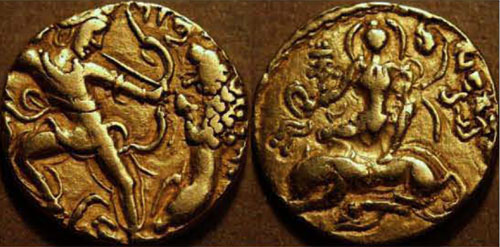
1. The Greek scholars recorded the names of kings of India as Xandrames, and Sandrocottus. Western historians deliberately identified these names with those of Mahapadmananda or Dhanananda and Chandragupta Maurya. Xandrames was said to be the father of Sandrocottus. According to John W. McCrindle, Diodorus distorted the name "Sandrocottus" into Xandrames and this again is distorted by Curtius into Agrammes21. It is totally absurd to link Xandrames with Mahapadmananda and Sandrocottus with Chandragupta Maurya. Most probably, Greeks called Chandra (Chandragupta) as Xandrames and Samudragupta as Sandrocottus. Moreover, the description given by the Greek scholars about Sandrocottus his father Xandrames are quite inapplicable to Chandragupta Maurya and could only apply to Samudragupta too. According to Greeks, Xandrames was the king of Gangaridai and Prasii whereas Dhanananda was the ruler of entire Northwest, central and eastern India. It is also said that Sandrocottus (Samudragupta) killed his father Xandrames (Chandragupta). This fact has been wilfully ignored by the biased western historians and their followers.
2. All Greek writers mentioned that Sandrocottus, the king of Prasii, whose capital was Palibothra i.e. Pataliputra. Megasthenes, Deimachos and other Greek ambassadors of Seleucus Nikator were sent in the court of Samudragupta and Chandragupta II at Palibothra. Pataliputra became the capital of Magadha Empire only during the reign of Chandragupta I around 335 BCE. According to Puranas, Girivraja or Rajagriha (Rajgir) was the capital city of Magadha during the reign of Nandas and Mauryas. Thus, Pataliputra was not the capital city of Chandragupta Maurya. From 3rd century BCE onwards, the city of Pataliputra became famous as the capital of Magadha. This is the reason why Vishakhadatta referred Pataliputra as the capital city of Magadha Empire in his work "Mudraraksasa" but this cannot be taken as evidence to reject the Puranic reference. Moreover, Mudraraksasa is a drama based on historical fiction. All the Puranas unanimously tell us that the capital of Magadha Empire was Girivraja or Rajagriha till the fall of Satavahana dynasty.
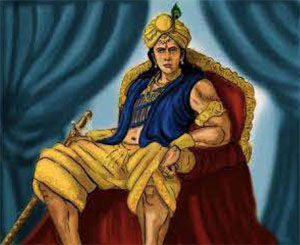
3. According to Megasthenes, Sakas or Scythians were living in the northern side of India. "India, which is in shape quadrilateral, has its eastern as well as its western side bounded by the great sea, but on the northern side it is divided by Mount Hemodos from that part of Scythia which is inhabited by those Scythians who are called the OEakai, while the fourth or western side is bounded by the river called the Indus, which is perhaps the largest of all rivers in the world after the Nile." Many other Greek scholars also wrote about Scythians. Thus, it seems that Northern Saka Ksatrapas were ruling in the North-western frontier region during the time of Megasthenes. It is well known that Saka Ksatrapas were contemporaries of Guptas not Mauryas. Asoka inscriptions mention about only Yavana kings named Antikina, Alikasundara, Maga, Turamaya and Gongakena (not Greeks but indigenous Yavana kings of Afghanistan and Northern Pakistan) ruling in the western frontier regions. Western historians speculated about these kings to be Antiochus Theos II of Syria, Alexander of Epirus, Magas of Cyrene, Ptolemy II Philadelphos of Egypt and Antigonus Gonatus of Macedonia. These baseless speculations are simply based on the resemblance of names without any direct or indirect evidence. The references of Yavana kings in Asoka inscriptions indicate that Yavanas were the rulers in the western frontier regions not Sakas. There is no reference of Saka Ksatrapas in the entire account of Mauryan history. Therefore, Sandrocottus can only be Samudragupta who was the contemporary of Saka Ksatrapas not Chandragupta Maurya.
4. Seleucus Nikator also sent Deimachos on an embassy to Allitrocades or Amitrocades, the son of Sandrocottus. Western historians identified Allitrocades or Amitrocades to be Bindusara, the son of Chandragupta and concocted that Bindusara was also known as "Amitraghata". None of the Indian sources ever referred Bindusara as Amitraghata. Western historians deliberately created the word "Amitraghata" with some sort of resemblance. According to Puranas, Samudragupta was also known as "Asokaditya" and Chandragupta II was also known as "Vikramaditya". Probably, Allitrocades or Amitrocades referred to "Vikramaditya", the son of Sandrocottus (Samudragupta).
5. Megasthenes described the system of city administration of Pataliputra but there is no similarity between the system described by Megasthenes and the system of city administration given in Kautilya Arthasastra. Megasthenes also stated that there was no slavery in India but Kautilya Arthasastra's Chapter 65 named "Dasakalpa" is solely devoted to the status of slaves among the Aryans and the Mlecchas. Probably, the slavery system that existed during Mauryan era has gradually declined by Gupta era. Thus, Megasthenes cannot be contemporary to Chandragupta Maurya.
Other than their mention of the Brahmanas, the Greek narratives about Alexander's invasion do not directly mention the caste system. Some Brahmanas acted as advisors to local princes: Alexander had groups of Brahmanas hanged in present-day Sindh for instigating the rulers Musicanus and Sambus to revolt against him. The Greek writings attest the existence of slavery in at least two places: Onesicritus describes slavery in the territory ruled by Musicanus, and Aristobulus mentions poor people selling their daughters publicly in Taxila. Aristobulus also observed Sati, the practice of widows immolating themselves on their husbands' pyre, at Taxila. The practice of exposing dead bodies to vultures, similar to the Magian practice of Tower of Silence, was also prevalent in Taxila.
-- Indian campaign of Alexander the Great, by Wikipedia
6. Megasthenes not only often visited Palibothra but also stayed in the court of Sandrocottus for a few years. But he did not even mention about Kautilya or Chanakya who was the real kingmaker and also the patron of Chandragupta. No Greek scholar ever mentioned about Kautilya. Therefore, Megasthenes cannot be the contemporary to Chandragupta Maurya.
In the country of the Praxii [The Prachyas (i.e. Easterns) are called by Strabo, Arrian, and Pliny [x], Prasii; by Plutarch (Alex. 62) [x], a name often used by Aelian also; by Nikolaus Damas. (ap. Stob. Floril. 37, 38) [x]; by Diodorus (xvii. 93) [x]; by Curtius (IX. 2, 3) Pharrasii; by Justin (xii.8,9) Praesides. Megasthenes attempted to approximate more closely to the Sanskrit Prachya, for here he uses [x]. And it appears that [x] should be substituted for [x] in Stephan. Byzant., since it comes between the words [x] and [x]. — Schwanbeck, p. 82, not. 6.] who are an Indian people, Megasthenes says there are apes not inferior in size to the largest dogs. They have tails five cubits long, hair grown on their forehead, and they have luxuriant beards hanging down their breast. Their face is entirely white, and all the rest of the body black. They are tame and attached to man, and not malicious by nature like the apes of other countries.
-- Fragm. XIII., Ancient India as Described by Megasthenes and Arrian; Being a Translation of the Fragments of the Indika of Megasthenes Collected by Dr. Schwanbeck, and of the First Part of the Indika of Arrian, by J.W. McCrindle
7. Greek scholars often mentioned that Sandrocottus was the king of the country called as Prasii (Prachi or Prachya). Pracha or Prachi means eastern country. During the Nanda and Mauryan era, Magadha kings were ruling almost entire India. Mauryan Empire was never referred in Indian sources as only Prachya desa or eastern country. Prachya desa was generally referred to Gupta Empire because Northern Saka Ksatrapas and Western Saka Ksatrapas were well established in North and West India. Megasthenes mentioned that Sandrocottus is the greatest king of the Indians and Poros is still greater than Sandrocottus which means a kingdom in the North-western region is still independent and enjoying at least equal status with the kingdom of Sandrocottus.
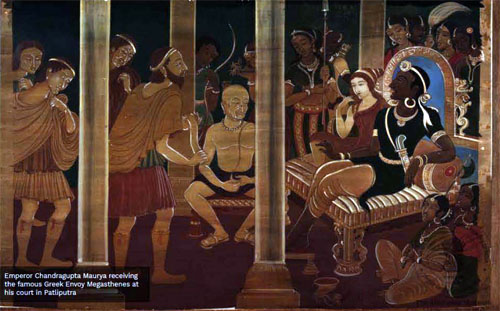
Chandragupta Maurya and his successors were the most powerful kings of India. It was impossible for any other Indian king to enjoy equal status with Mauryan kings because Mauryans inherited a strongest and vast empire from Nandas. Therefore, Sandrocottus, the king of Prasii can only be Samudragupta not Chandragupta Maurya.
8. The Greek historian Plutarch mentioned that Androkottus (Sandrocottus) marched over the whole of India with an army of 600 thousand men. Chandragupta Maurya defeated Nandas under the leadership of Chanakya. There was no need for him to go on such expedition to conquer the whole of India because he has already inherited the Magadha kingdom of Nandas covering entire India. Actually, it was Samudragupta who overran the whole of India as details given in Allahabad pillar inscription.
9. According to Greek historians like Justinus, Appianus etc., Seleukos made friendship with Sandrocottus and entered into relations of marriage with him. Allahabad pillar inscription tells us that Samudragupta was offered their daughters in marriage (Kanyopayanadana ... ) by the kings in the North-west region. There is nothing in Indian sources to prove this fact with reference to Chandragupta Maurya.
10. The Jain work "Harivamsa" written by Jinasena gives the names of dynasties and kings and the duration of their rule after the nirvana of Mahavira. Jinasena mentions nothing about Mauryas but he tells us that Gupta kings ruled for 231 years. Western historians fixed the date of Mahavira-nirvana in 527 BCE which means Mauryas ruled after Mahavira-nirvana but Jaina Puranas and Jaina Pattavalis had no knowledge of Mauryas after Mahavira-nirvana. Thus, Mauryas ruled prior to Mahavira-nirvana. Therefore, Sandrocottus can only be identified with Samudragupta.
Mahavira (Sanskrit: महावीर:), also known as Vardhamana is the 24th Tirthankara of Jainism. He was the spiritual successor of the 23rd Tirthankara Parshvanatha. Mahavira was born in the early part of the 6th century BCE into a royal Jain family in Bihar, India. His mother's name was Trishala and his father's name was Siddhartha. They were lay devotees of Parshvanatha. Mahavira abandoned all worldly possessions at the age of about 30 and left home in pursuit of spiritual awakening, becoming an ascetic. Mahavira practiced intense meditation and severe austerities for 12 and a half years, after which he attained Kevala Gyan (omniscience). He preached for 30 years and attained Moksha (salvation) in the 6th century BCE, although the year varies by sect.
Historically, Mahavira, who preached Jainism in ancient India, was an older contemporary of Gautama Buddha. Scholars variously date him from the 6th to 5th century BCE, and his place of birth is also a point of dispute among them.
Mahavira taught that observance of the vows of ahimsa (non-violence), satya (truth), asteya (non-stealing), brahmacharya (chastity), and aparigraha (non-attachment) are necessary for spiritual liberation. He taught the principles of Anekantavada (many-sided reality): syadvada and nayavada. Mahavira's teachings were compiled by Indrabhuti Gautama (his chief disciple) as the Jain Agamas. The texts, transmitted orally by Jain monks, are believed to have been largely lost by about the 1st century CE (when the remaining were first written down in the Svetambara tradition). The surviving versions of the Agamas taught by Mahavira are some of Svetambara Jainism's foundation texts, but their authenticity is disputed in Digambara Jainism.
Statue of Mahavira meditating in the lotus position at Shri Mahavirji, Rajasthan, India.
Mahavira is usually depicted in a sitting or standing meditative posture, with the symbol of a lion beneath him. His earliest iconography is from archaeological sites in the North Indian city of Mathura, and is dated from between the 1st century BCE and the 2nd century CE. His birth is celebrated as Mahavir Janma Kalyanak and his nirvana (salvation) and also his first shishya (spiritual enlightenment) of Shri Gautama Swami is observed by Jains as Diwali.
-- Mahavira, by Wikipedia
11. If Sandrocottus was indeed Chandragupta Maurya, why do none of the Greek sources mentioned about Asoka, the most illustrious and greatest of Mauryan kings? It is evident that Greek sources had no knowledge of Asoka. Therefore, the ancient Greeks were contemporaries to Gupta kings not Mauryas.
In view of the above, Samudragupta was the contemporary of Alexander not Chandragupta Maurya. Unfortunately, this distorted history is being taught to Indians since last 231 years. Indian historians also blindly followed on the footsteps of Western historians.
Western historians were born and brought up in a religious Christian society. They were faithful to the Biblical conception of the creation of the world in 4004 BCE. They knew the fact that the antiquity of the history of Greece and other European countries cannot be greater than 1000 BCE. When they encountered with the antiquity of ancient Indian history that is greater than 6776 BCE, Western historians could not believe it. Therefore, they started distorting the chronology of ancient India. First of all, Sir William Jones conspired and deliberately cut down 1200 years of Indian history by identifying Sandrocottus as Chandragupta Maurya. To cover up this distortion, Jones declared that Puranic account of Indian history is mythological and unreliable but selectively accepted the genealogy of various dynasties from Puranas. Actually, many Western historians pursued their research with an objective to curtail the antiquity of the chronology of ancient India so that the supremacy of ancient Greek civilization can be established.
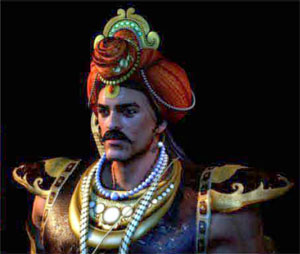
Western historians were fascinated with the history of Alexander from their childhood. They started searching the footprints of Alexander's invasion in India. Interestingly, there is no reference of Alexander's invasion in Indian literary sources because it was actually a non-event for Indians. Western scholars concocted the theory that the Yavanas mentioned in Indian sources are Greeks without any evidence. According to various Indian sources, Yavana kingdoms existed in Indian history since Mahabharata war that located in the west and north side across the Indus river. Thus, Indian Yavanas were more ancient than the birth of ancient Greek civilisation.
In fact, it can be confidently stated that the great victory of Alexander and the homesickness of Greek soldiers have been concocted by historians of Alexander who were employed by him to chronicle his achievements. Probably, the army of Alexander was comprehensively defeated by the Indian king Poros and the wounded Alexander and his army have to flee through the channels of Indus River and they landed on the shores of Arabian sea. They were then forced to march along the dry Makran and Persian Gulf coast and somehow finally, made it back to Babylonia where the wounded young Alexander died there in 323 BCE at the age of 33 years. It may be noted that Alexander employed the historians to chronicle his victories not the defeats.
Therefore, the Greek historians concocted the victorious army of Alexander fell homesick and feigned the ignorance of geography for the return journey through the channels of Indus River. It is unbelievable that the victorious army of Alexander fell homesick otherwise they could have amassed unimaginable wealth from India, the most prosperous country of the world of the times. Moreover, Megasthenes, who was sent as ambassador to King Poros by Seleukos, mentioned that Poros was even greater than Sandrocottus. If Poros was defeated and appointed as satrap by Alexander, how could he become greater than Sandrocottus? After the death of Alexander, his generals decided to divide his Empire among themselves but interestingly, no part of India east of Indus River was included as part of Alexander's Empire. Therefore, it seems that the victory of Alexander over the Indian king Poros, the homesickness of his army and the ignorance of geography were just concocted stories by paid Greek historians of Alexander.
Strabo once stated
"Generally speaking, the men who have hitherto written on the affairs of India were a set of liars. Deimachos holds the first place in the list; Megasthenes comes next; while Onesikritos and Nearchos with others of the same class, manage to stammer out a few words of truth."
As quoted by Kota Venkatachalam, Troyer also rejected the identification of Chandragupta Maurya with Sandrocottus and pointed out that one of the Chandraguptas of the Gupta dynasty should be taken as Sandrocottus. If Samudragupta is accepted as Sandrocottus the contemporary Indian king of Alexander and the epoch of Saka coronation era in 583 BCE, there will be no conflict in the traditional Indian records and epigraphic records. Moreover, we need not to declare certain copper plate inscriptions as forgeries. Unfortunately, the Eurocentric and the distortionist approach of Western historians caused extreme damage to the chronology of ancient India. These intellectuals having no integrity pursued their research by distorting and concocting numerous so-called historical facts which can be called nothing less than a "fraud".

